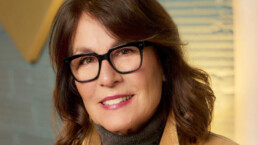The adage goes that the first step to solving any problem is recognizing there is one. This can be quite challenging to do, as acknowledging problems oftentimes comes with needing to face our fears, insecurities, and shame head-on. That is why we need brave filmmakers like Louise Woehrle, whose new documentary A Binding Truth shines a light on a vital story of two friends who learned of their shared family ancestry through their ancestor’s slaveholding roots.
Related: ‘A Binding Truth’ Uncovers a Complicated Familial History
In our exclusive interview, Louise Woehrle discusses how by confronting our nation’s dark past of racism and slavery, we can all heal and grow stronger together. She also discusses the behind-the-scenes work of bringing the story to the screen, her production company Whirlygig Productions, and her message for her future film work: “I believe we need more stories that help us see each other with more compassion, understanding, and acceptance.”
C: How did you first learn about the incredible life story of Jimmie Lee Kirkpatrick, the main subject in your documentary, A Binding Truth?
Louise: I first learned about Jimmie and his story when I was in New York screening my previous documentary Stalag Luft III – One Man’s Story. My cousins Ellen and Katie Holliday attended the screening. Katie is married to De Kirkpatrick, the other central subject in our film.
C: In 1965, Jimmie integrated from his all-Black high school into an affluent white high school in Charlotte. One of his classmates, De Kirkpatrick, shared the same last name. Almost fifty years later, a shocking discovery was made that De’s ancestors were slaveholders who owned Jimmie’s ancestors. What was it like for you to learn of that moment, and how did you want to handle that in the film?
Louise: It took my breath away because I knew what a shock this was to De. I wanted to tell this part of the story with the truth and in an authentic way. De was more than willing to stay open and honest in pursuing the truth of his slaveholding roots. There were no rose-colored glasses.
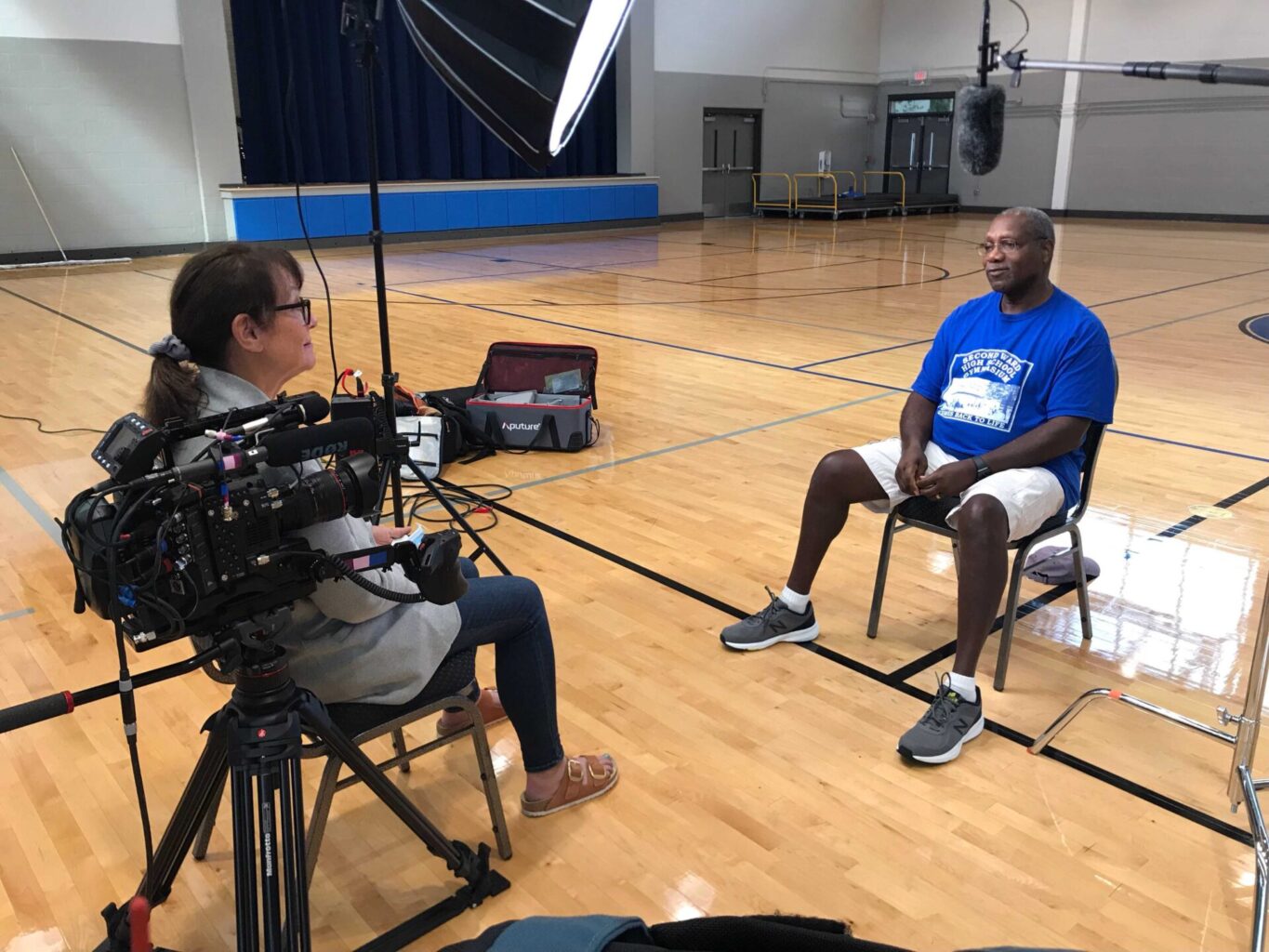
C: What were the first steps you took to begin this project?
Louise: My executive producer, Jay Strommen, and I flew to Charlotte to meet with Jimmie and De. We talked in depth. We listened to them and shared our interest in doing a documentary about their story and why it was so important. They agreed it was a good idea and a good fit – we were off and running!
After that, I knew I needed fundraising tools, starting with a sizzle reel. Thankfully, Jay provided our start-up capital. Next, I went to FilmNorth, located in the Twin Cities of Minneapolis/St. Paul to get our fiscal sponsorship set up through them. They are a 501c3 that has served as a fiscal sponsor on several of my films, thereby allowing contributors to donate to our project as a charitable contribution.

I next contacted Gary Schwab, a journalist for the Charlotte Observer who had written a 3-part series with David Scott about Jimmie in 2013 and subsequently a story in 2014 about Jimmie and De reconnecting decades after high school. Gary was a wealth of knowledge. Next, cinematographer Chip Johnson, a longtime friend and colleague, and I filmed interviews with Jimmie Lee and De and shot some broll of them in the Sardis Slave Cemetery.
I gathered photos from both men, and Chip worked with me to edit a 13-minute sizzle reel. Next, a friend of De’s, Jock Tonissen, organized a fundraiser luncheon held at Myers Park Presbyterian Church in Charlotte, where I met our lead fundraiser Chuck Hood. Chuck got out there and raised most of the funds with Lauren Batten of Vandever Batten.
C: There are several deeply emotional, delicate moments shared between Jimmie and De that you portray sensitively in the documentary. What were those moments like for you to edit?
Louise: Jimmie is a very sensitive person who can share his emotions. Delving into his past was very emotional for him. He says in the film, “When you do this kind of work, your emotional tank needs to be full.” De is sensitive, too, but is more analytical. I mean, he is a forensic psychologist, so that makes sense.
When we were editing the film, it was my goal to show both men in their true light. Thank you for saying that those moments were handled with sensitivity.
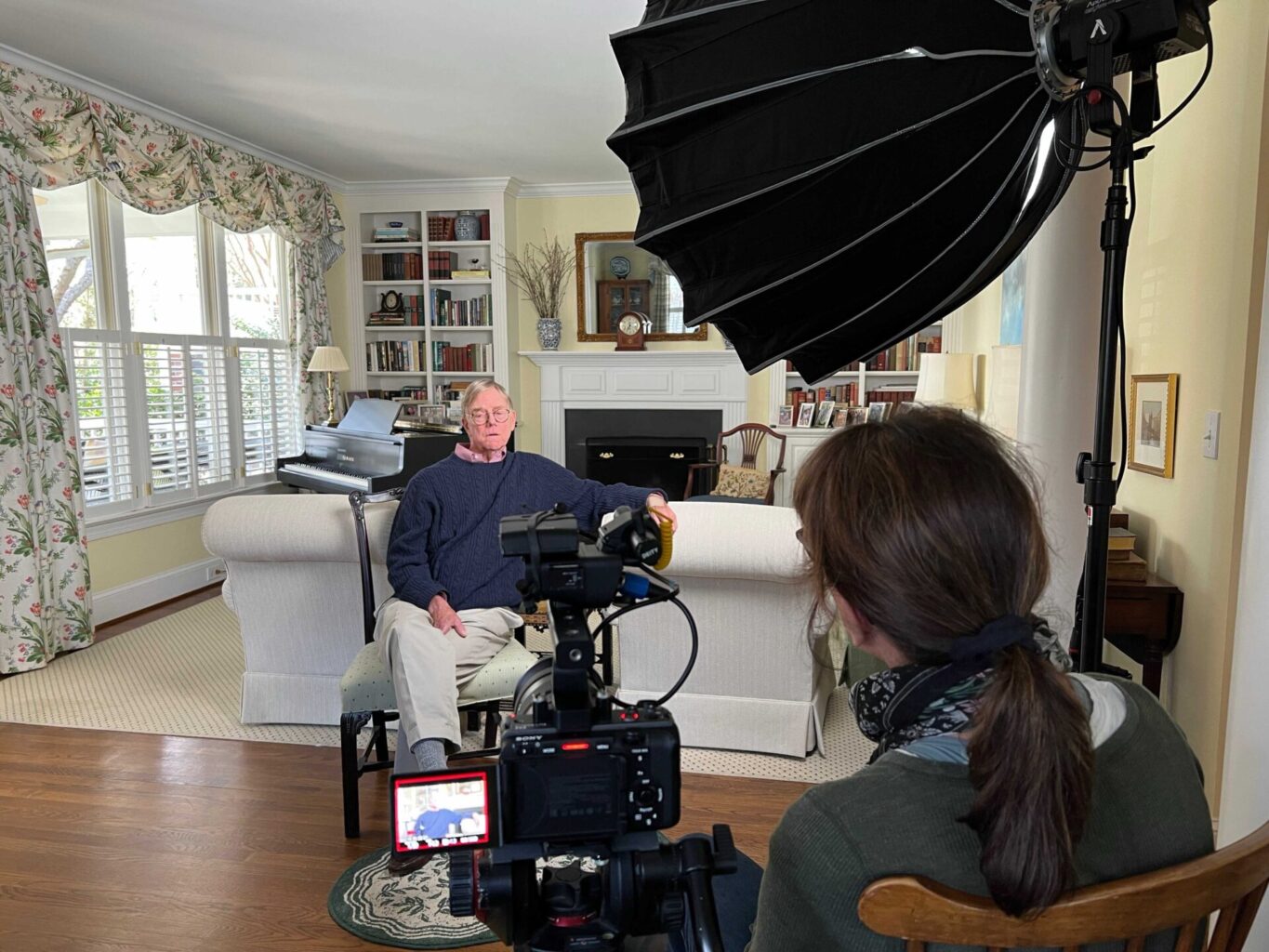
C: You contextualize their story by also showing parts of our nation’s larger, problematic history with racism and slavery, using incredible archival footage. In particular, I was so moved to hear the voice recording of the former enslaved Fountain Hughes. How did you go about finding all of this footage?
Louise: The research never stopped from pre-production through post-production. It takes a lot of time and due diligence. We found incredible images and footage. When I heard the Fountain Hughes recording from the 1930s, I knew he was our link to help connect the past to the present. What he says is so powerful as a former enslaved person.
Most of the images were found through various archives in Charlotte libraries and museums, while others were found in the National archives. I had dedicated researchers on the project, so it wasn’t only me digging for gold.
C; What challenges did you face while making the film? What were your favorite moments in the film?
Louise: I would say telling the story of Jimmie and De when they first met nine years ago was challenging, but I think we figured it out. One of the biggest challenges was letting go of some great stories that did not make it into the film. My goal was to keep the length at 90 minutes. It was so tough.
One of my favorite moments in the film is when we are surprised by Emma, age 92, with her uncanny ability to read people, her humor, and her honesty in talking about her own family’s history as slaveholders. Another moment is when Jimmie takes us back to his past with his son JJ, and De’s time in the cemetery with Jimmie, with a voiceover of De reading prose he wrote titled White Bones.
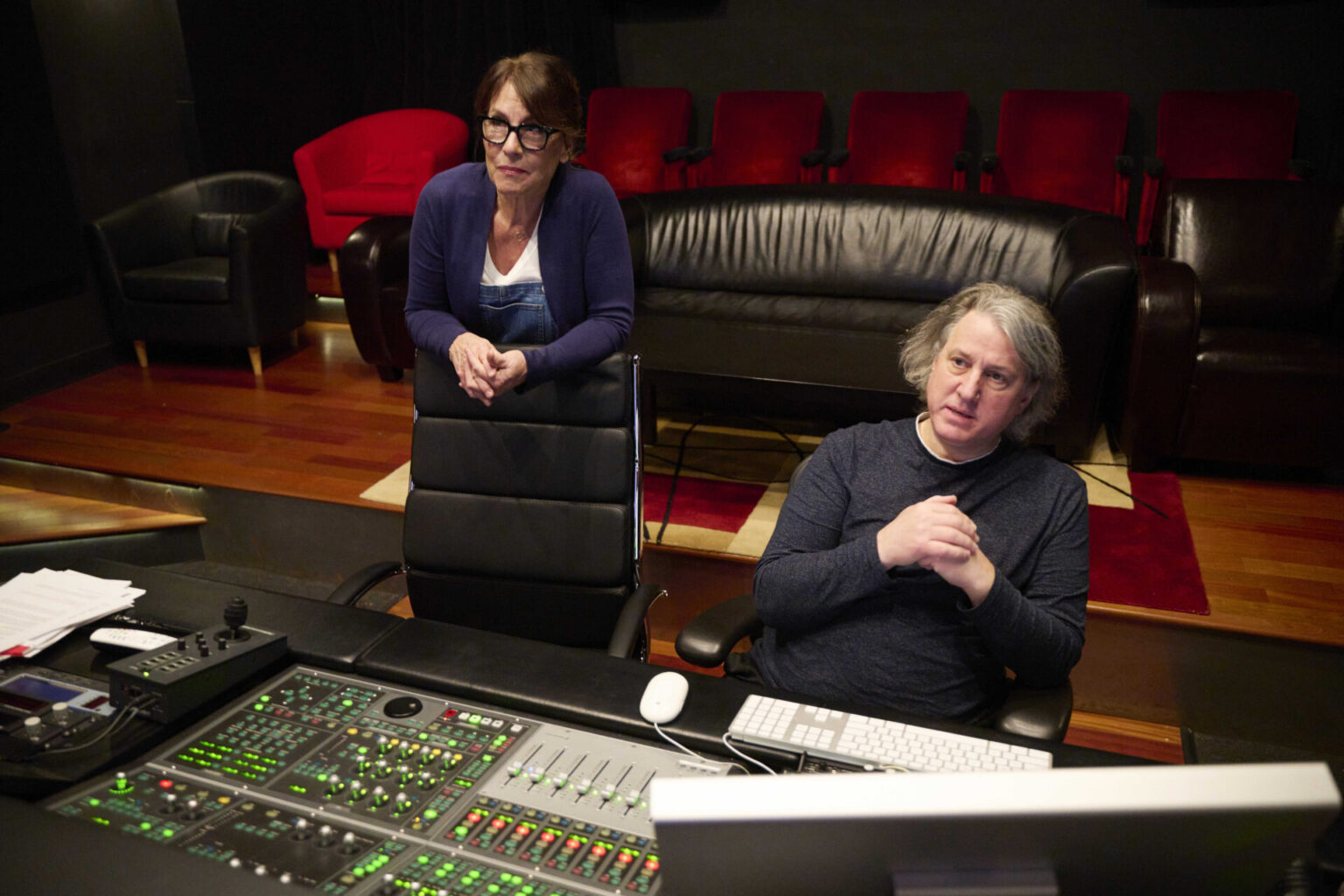
C: While your documentary uncovers a lot about the past, the film also looks towards the future, with the message about how we must acknowledge our atrocities and have difficult conversations with each other to learn and grow. What do you hope people take away from the film?
Louise: I hope that people will see themselves somewhere in the film and relate to the stories – be touched in some way. I believe that when we are awakened by the truth, it allows us to see things through a new lens. The truth is what I hope is conveyed through Jimmie and De’s stories. How people react to the film will be theirs to share, hopefully in positive ways.
We have already witnessed that the film sets the table for personal conversations about race and the Truth of America’s Slave history and how that ties to racism today. I know that Jimmie and De show us a way forward.
C: Louise Woehrle, where are you from?
Louise: I grew up and live in Minneapolis, Minnesota.
C: How did you get your start in filmmaking?
Louise: I was previously an actress in theater and on-camera, doing commercials and voiceover work. My first job as a producer was at a small production company. The owner had seen a Birthday video I was working on for my dad and his twin brother. I was still married at the time. The co-owner of the production company asked how long I had been a producer, and I told her that I wasn’t a producer. She said, “Yes, you are,” and told me that if I ever wanted a job, she would hire me.
So, when I got divorced, my two boys were 5 and 8 years old, and I needed a job – I took that lovely woman up on her offer. That’s where I learned to be a filmmaker and all the various aspects that are involved. It was like getting paid while going to school.

C: Can you tell us more about Whirlygig Productions, the production company you founded in 2002?
Louise: After working at that small production company for 3.5 years, it was time for me to fly on my own. So in 2002, I committed to telling stories that mattered. I started my company Whirlygig Productions as an independent filmmaker. There was no studio, only me.
I created a mission statement for Whirlygig: “Telling stories that help us see ourselves and others in new ways, promote healing, and connect us as human beings.” I have stuck with that mission and love that I get to serve as a conduit for stories that matter. For me, that means shedding light on important stories that need to be told that can serve as catalysts for change.
C: What have you learned about working in indie film, and what did you wish you knew before you began?
Louise: I have learned so much about myself and what matters to me by telling stories about so many different people, places, cultures, and causes. I realize the power of storytelling and how much we can learn from each other. I also feel it’s a privilege to shine a light on stories that can positively affect lives and how important trust and integrity are in being able to do that.
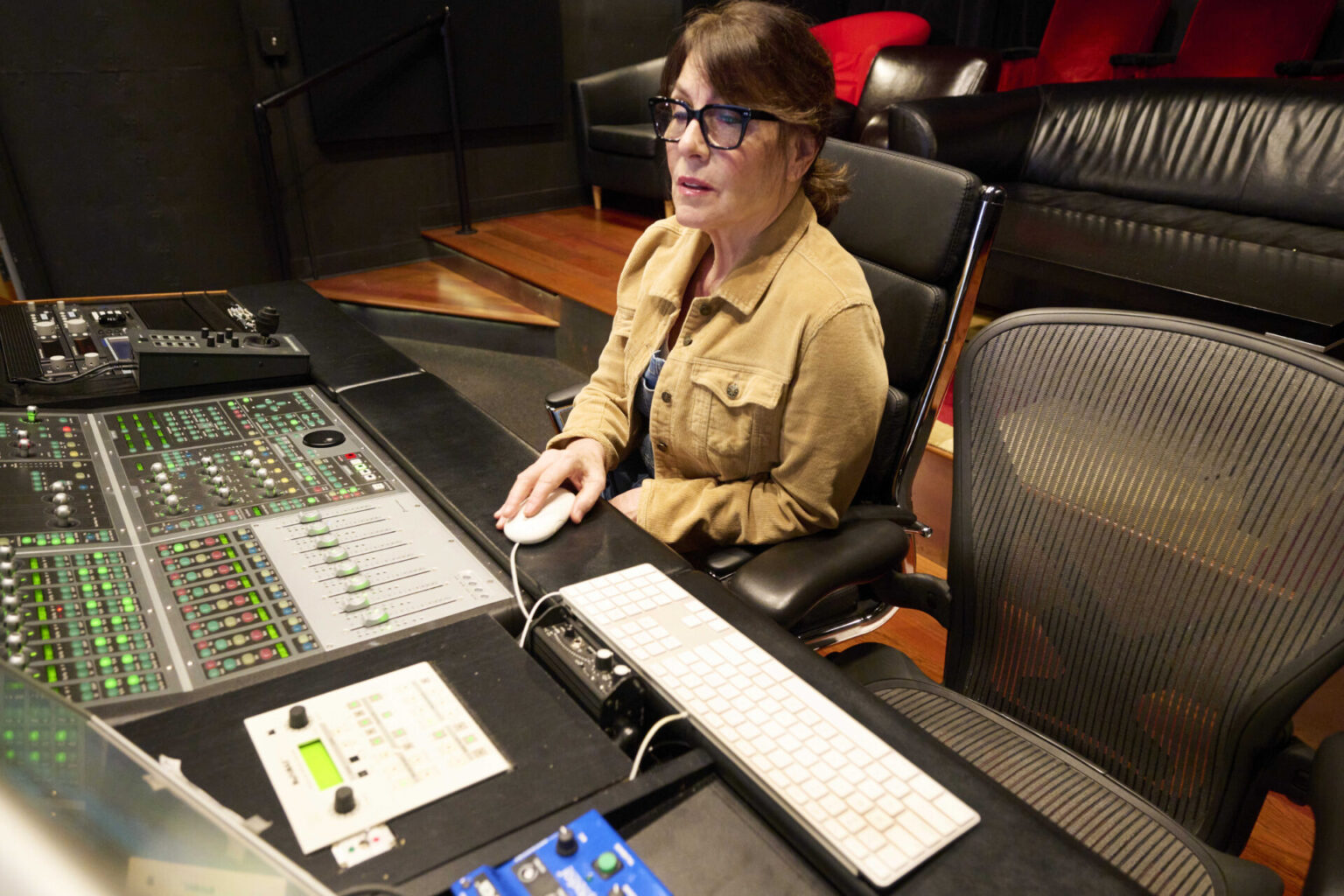
C: Who are your filmmaking heroes and dream collaborators?
Louise: I have many film heroes, but in the documentary world, I would say Ken Burns and Waad Al-Kateab.
C: What messages are important to you that you wish to explore in your future work?
Louise: I’ve always been interested in mental health and being there for young people. We need to shed more light on trans young people and their stories. There are far too many deaths by suicide, and I believe we need more stories that help us see each other with more compassion, understanding, and acceptance.

